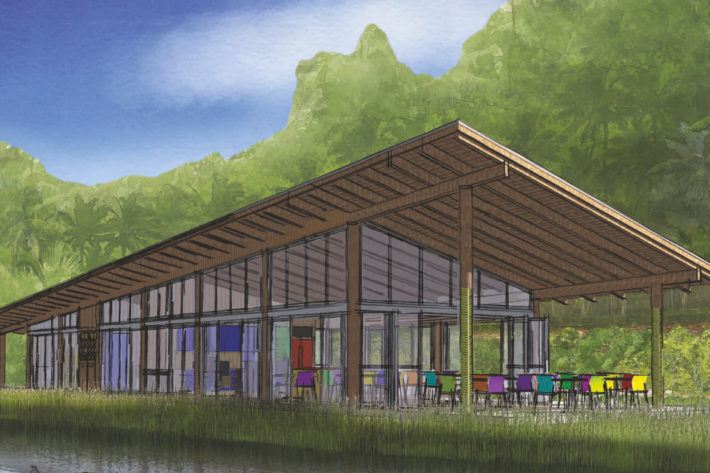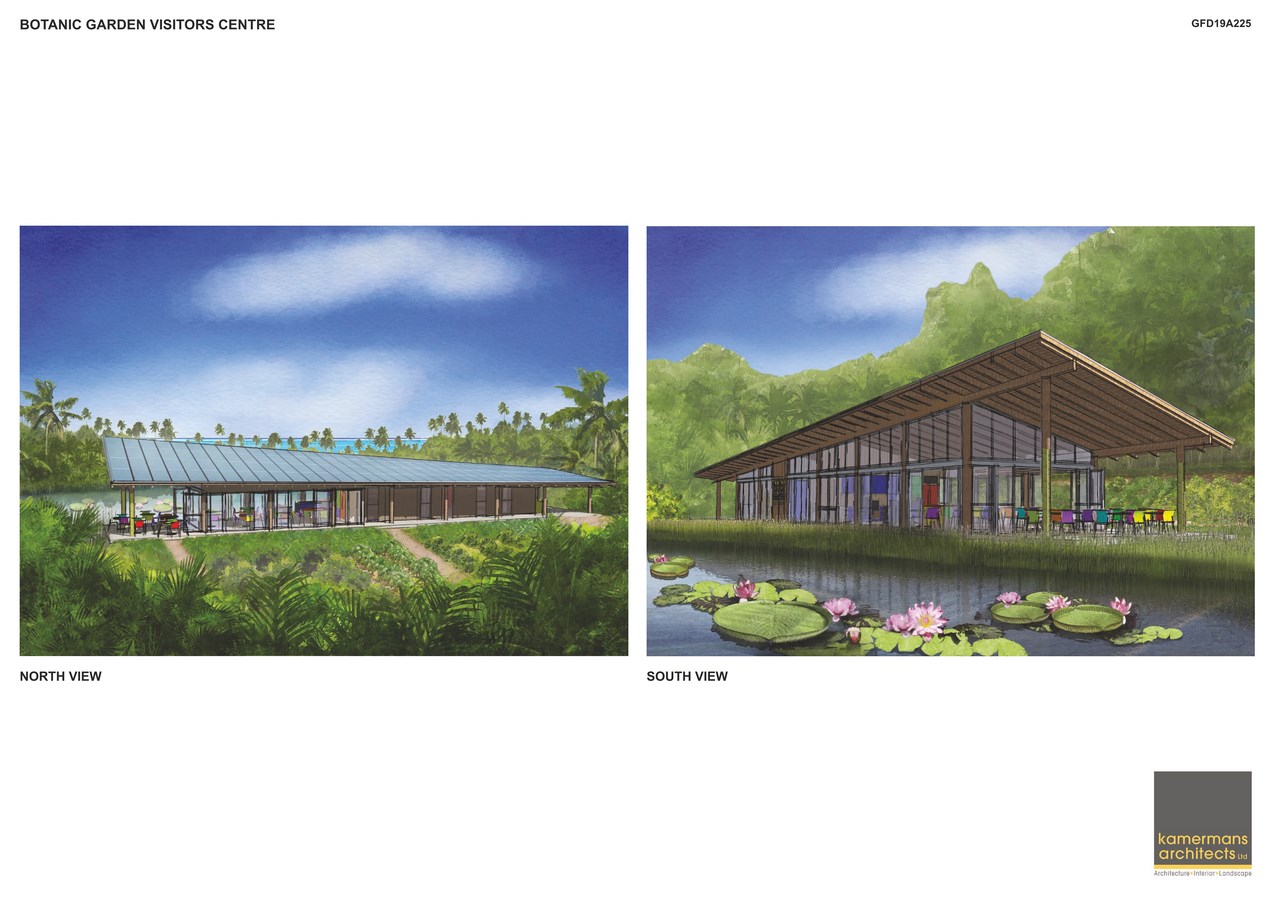Global Future Design Awards 2019
First Award
Category: Cultural (Concept)
Firm: Kamermans Architects Ltd
Architect: Frans Kamermans
Country: New Zealand
Another great opportunity. APR’s next award Urban Design & Architecture Design Awards 2019 is open for Registration. Don’t miss the chance, its a huge platform for architects.
Our brief was to design a Visitors Centre/Caretakers accommodation for the proposed Cook Islands National Botanic Garden in Rarotonga with a latitude of 21.2°.
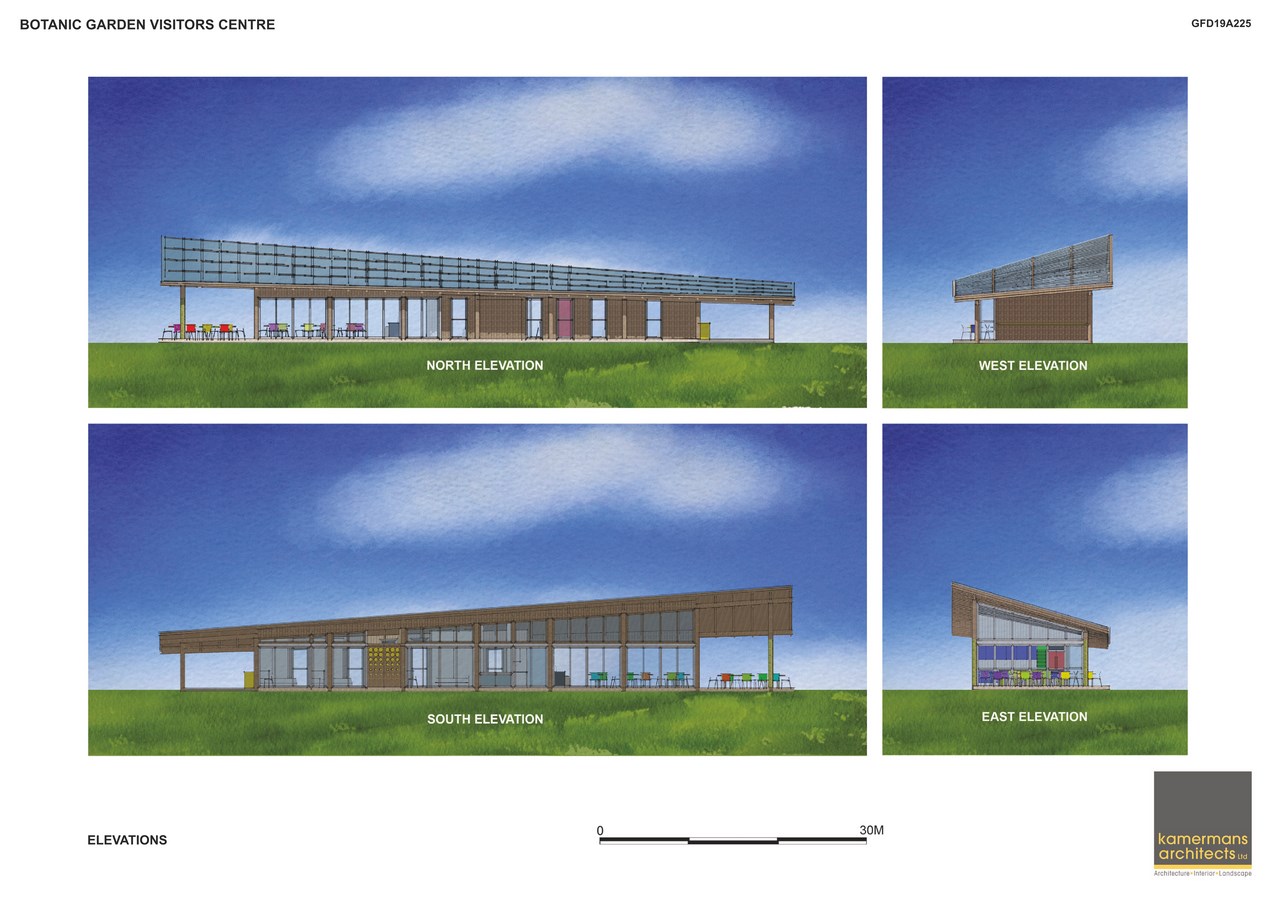
The building is designed to be highly sustainable.
The concept is essentially one large “twisted” roof that provides shelter from tropical rain, sun and wind to the spaces below and acts as a collector for solar energy and potable water. The structure below the roof is relatively long and narrow to enable natural cross ventilation for all enclosed spaces.
The roof has a shallow pitch in the East-West axis to give lower ceilings to the smaller more private spaces on West side and higher ceilings to larger more public spaces on the East side . The rafters are laid to an increasing roof angle to accommodate sun control and outlook for the public spaces on the East side. This results in a twisted plane (curved) roof constructed out of straight timbers only. A single gutter & down pipe drains all roof water to a series of water tanks at the West side of the building.
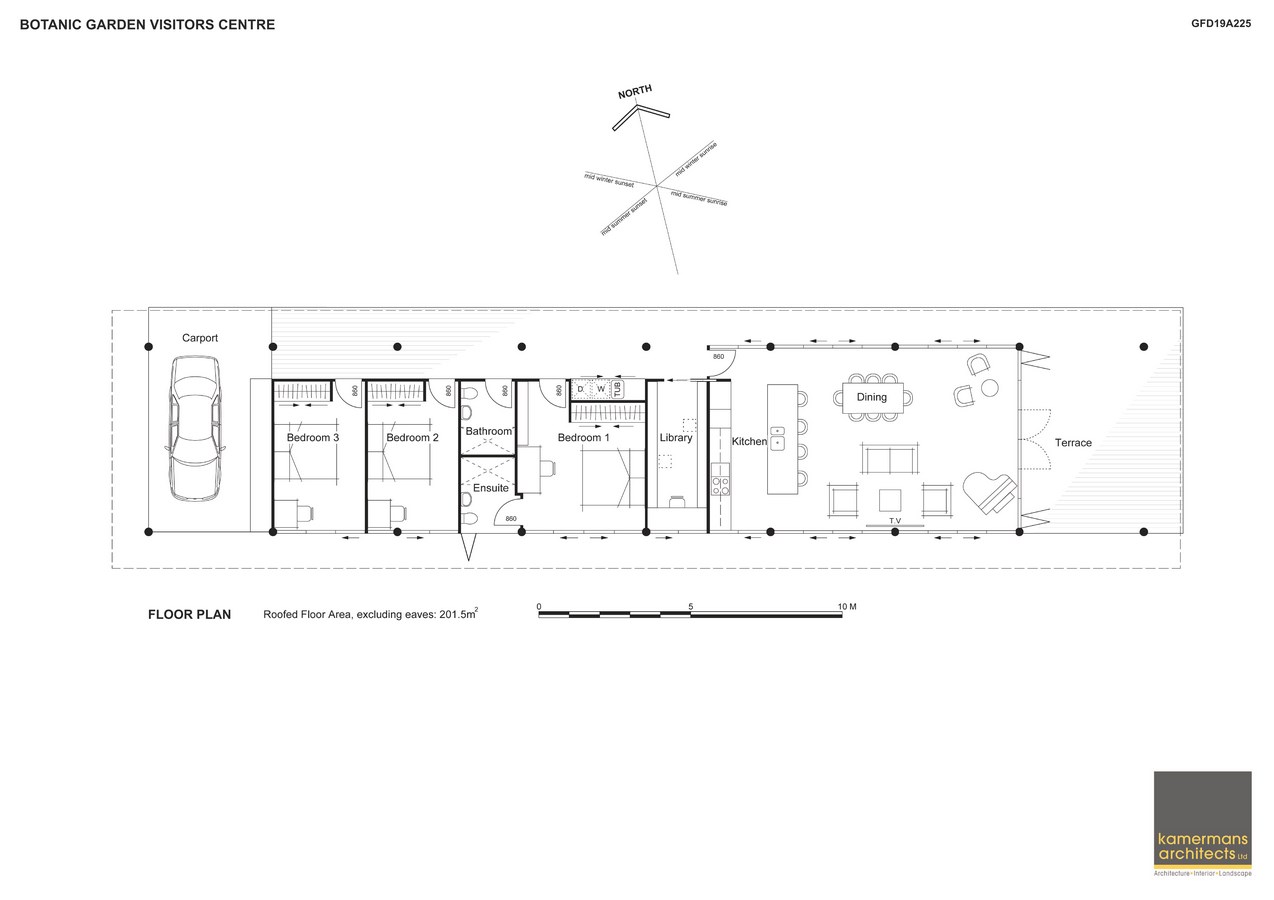
Locally available materials and building skills will be used as much as possible. Waste water is largely treated on site.
Traditional vernacular building shapes of large sheltering roofs using ancient passive solar principles for space heating and cooling are fused with advanced technology such as solar panels and waste water treatment.
The building’s sustainable features are;
* Passive solar natural heating and cooling
* Solar PV panels for electricity supply
* Thermal Solar panels for hot water supply
* Rainwater collection for potable and grey water supply
* Grey water treatment in local wet lands
* Organic waste treatment (composting) on site for use in the Botanic Garden
* Construction materials are predominantly locally sourced timber
* Locally sourced labour and construction skills
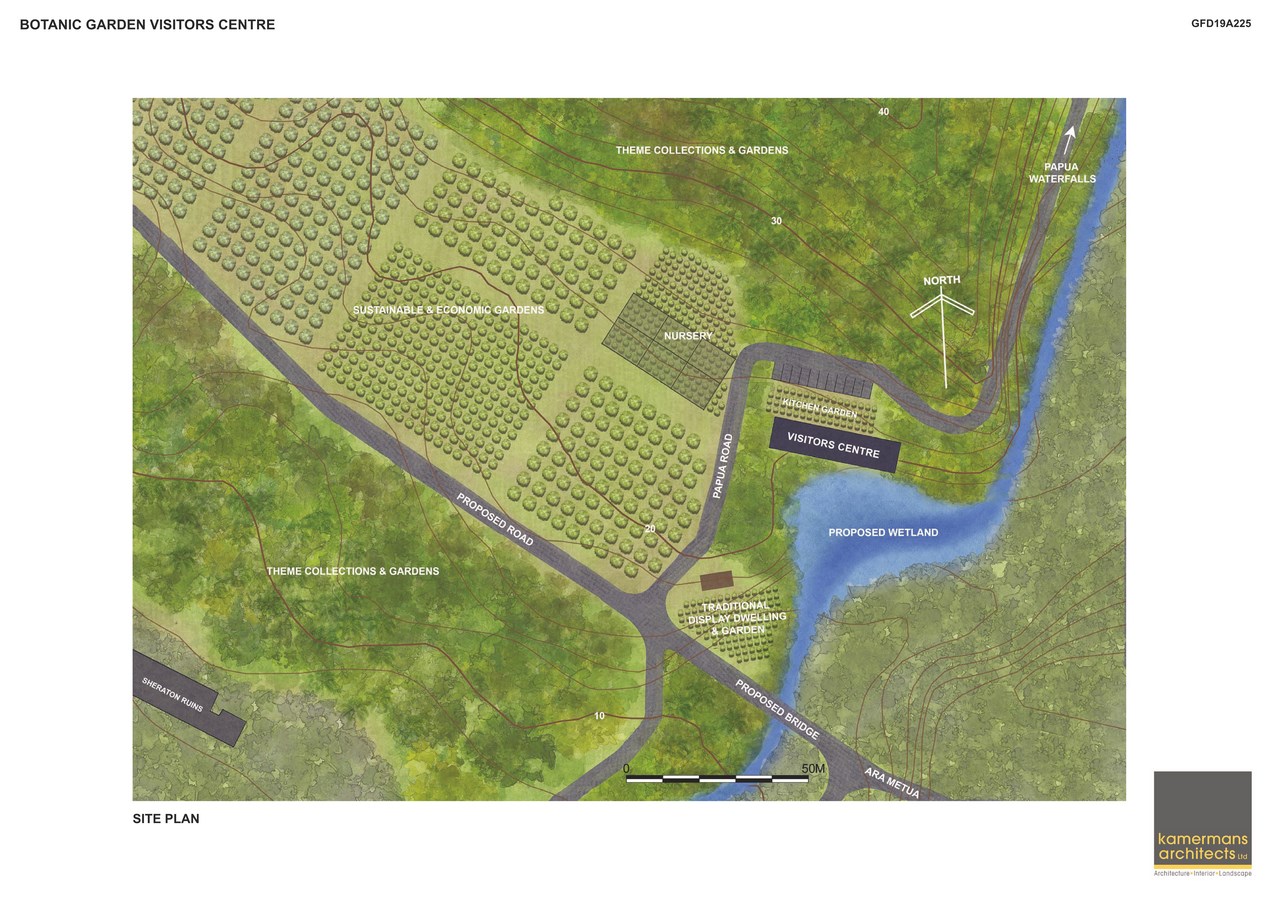
All of the above resulting in a highly sustainable, functional, elegant, economical and beautiful piece of Architecture.


